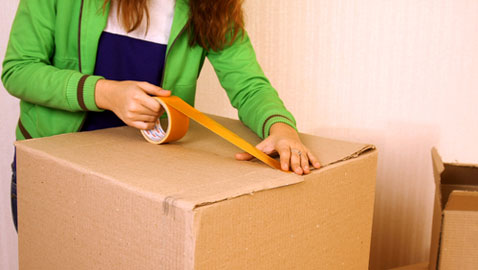
The number of homeowners moving home rose by 8% last year, according to the latest Lloyds Bank Homemovers Review.
An estimated 365,400 people moved home in 2014, as an 8% rise in house prices in 2014 boosted homeowners’ equity in their current homes, helping them build a deposit fro their next home.
This was the largest annual increase in the number of homemovers since 2010 and was the third successive rise.
The number of homemovers in 2014 was 16% higher than in 2009 at the depth of the recent housing market recession. Despite the pick-up in recent years, the number of homemovers last year was still less than half the all-time high recorded in 2004 (886,700) and just over half the average during between 2004 and 2007 (717,025).
First-time buyer numbers have risen significantly quicker than homemovers over the last few years. As a result, homemovers have declined as a proportion of all new mortgage financed home purchasers from 71% in 2004 to 54% in 2014.
Since 2009, the average price paid by a homemover has grown by 26% from £199,645 to £252,064 in 2014 – an increase of £52,418, equivalent to a monthly rise of £874. Homemover property prices increased by 9%in 2014.
The average deposit put down by a homemover in 2014 was £83,302; 9% higher than in 2013 (£76,739). This equates to 33% of the average price paid by homemovers of £252,064.
Regionally, homemovers in the capital put down the largest average deposit – £166,265 – 35% of the average property value of £480,416. This is more than four times the average deposit put down by homemovers in Northern Ireland (£40,128 – the lowest). Homemovers in the South West put down the largest average deposit in percentage terms (36%).
The recent changes to the stamp duty system have saved the average homemover £4,958, reducing the tax bill for the average homemover property of £252,064 from £7,561 to £2,603.
Andy Hulme, Lloyds Bank mortgages director, said: “House price rises over the past 12 months have enabled more homeowners to make the next move on the housing ladder. The resulting higher levels of equity in their property are providing homeowners with more funds to finance the purchase of their next home.
“A steady rise in property values in 2015 should further ease the constraint on many of those who bought their first home around the peak of the market in 2006 and 2007, enabling more of them to become second steppers.”
Second Steppers are those looking to get on the second rung of the housing ladder and are a subset of all homemovers. Higher house prices have increased the equity of those still living in their first homes enabling more of those who previously had either very low or negative levels of equity to make their first home move.
Recent research shows that first-time buyers typically stay in their first home for four years and five months. The research also shows that buying a detached home is now the most popular choice for second steppers.
Those potential Second Steppers who bought their first home four years and five months ago in 2010 are estimated to now have an average equity level of £76,131. This is equivalent to 25% of the average price of a typical Second Stepper home (£299,428). The estimated equity level has risen by over £10,000 in the past year (from £66,097) due to an increase in the prices paid for first-time buyer homes.
There are substantial differences in housing affordability across the country, with northern regions being more affordable than southern regions for Second Steppers.
House prices paid by a typical second stepper are now lower than a decade ago as a multiple of earnings; at 6.7 times gross annual average earnings in 2014 compared with 7.0 in 2004. Northern Ireland (5.4), East Anglia (5.6) and the East Midlands (5.9) are the most affordable regions for those in their first home looking to take their next step on the property ladder. The least affordable regions for second steppers are London (11.3), the South East (9.4) and the South West (8.2).